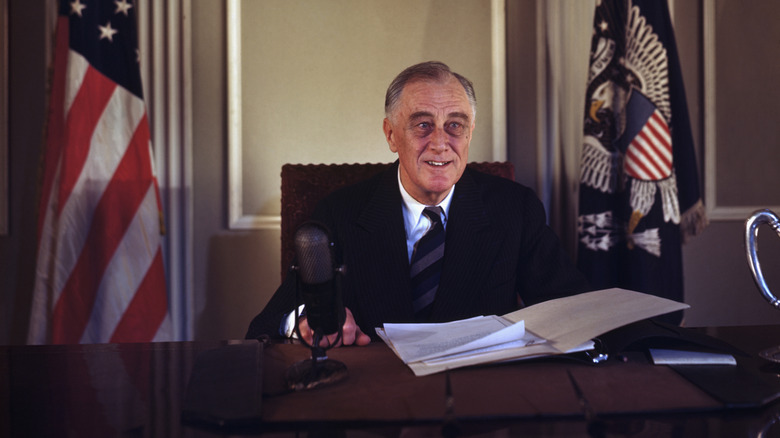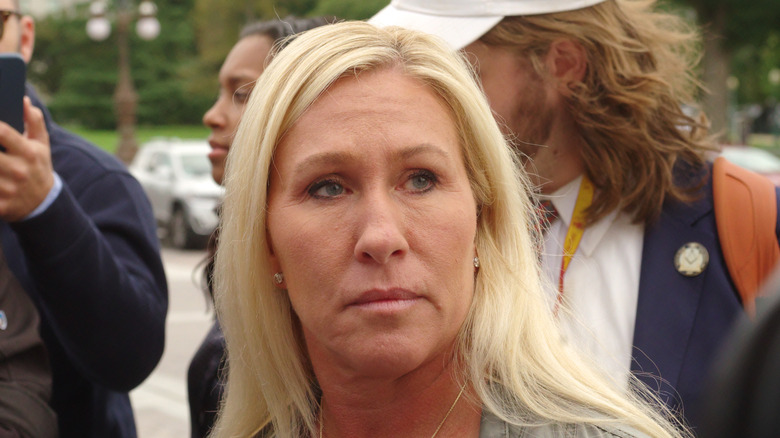You Won't Believe How Much Interest You'd Pay On A 50-Year Mortgage Loan
On November 8, 2025, President Donald Trump created a Truth Social post comparing himself to President Franklin Delano Roosevelt in a particular way: Roosevelt for greenlighting the 30-year mortgage and Trump for proposing the 50-year one. Benefits of mortgages with a longer term include a lower monthly payment, which can make it easier for people to budget and possibly buy a more expensive house. Here's a comparison between what a 30-year and a 50-year fixed-rate mortgage loan might look like for an average U.S. home. In November 2025, Zillow listed the average national home value at around $360,000. Working with that number, if a homeowner puts down 10%, we get a principal balance of $324,000. Borrowing this at the commonly available interest rate of 6.5% results in monthly payments of $2,048, including the principal and interest. With a 50-year loan term, the payment goes down to $1,826. That's the good news.
However, interest on a loan is typically calculated monthly on the remaining principal balance. Spreading out the amortization period and thereby slowing down the reduction of the principal increases the amount of interest paid over the life of the loan term. FYI: If the 50-year term becomes a reality, interest rates will likely differ from the 30-year-term choice. But even with a 6.5% rate, a homeowner in our example would pay back a total of $737,280 ($2,048 x 30 x 12) on a 30-year loan; that's $413,280 in interest. With a 50-year loan term, the same homeowner would pay the bank $1,095,600 ($1,826 x 50 x 12); that's $771,600 in interest.
The historical background on 30-year and 50-year mortgage terms
Both Trump and Roosevelt have proposed longer mortgage terms in response to challenging economic times; that said, there are some differences between these policy proposals. Before the Great Depression of the 1930s, a long-term mortgage with a fixed rate wasn't typically available to homebuyers. Instead, people obtained short-term loans and, after making payments, they refinanced the home to get another loan when the original mortgage became due. They repeated this process as many times as was necessary. After the stock market crash in 1929, though — the worst stock market day in history — about half of mortgages defaulted, with about a quarter on their way to foreclosure, according to Minnesota Public Radio's Marketplace. Refinancing a home as it had been done in the past was almost impossible. So, Roosevelt created the Home Owners Loan Corporation that led to the 30-year fixed-rate mortgage.
Trump's proposal also comes at a difficult economic time. As of the second quarter of 2025, 65.1% of Americans own homes, according to the Federal Reserve Bank of St. Louis. Less than 40% of them are mortgage-free, per 2024 ResiClub information. What's unsettling about home ownership these days is that the real estate market is shockingly stagnant. Redfin — Rocket Mortgage's real estate brokerage — is reporting that the home turnover rate in 2025 is just 2.8%. That's the lowest rate since the mid 1990s. Reasons cited for low turnover include record-high home prices, overall economic uncertainty, and the fact that over 70% of current mortgage holders have a rate below 5%, making them less willing to buy a new home and pay over 6%. By introducing 50-year mortgage terms, the Trump administration hopes to make monthly mortgage payments more affordable and thus galvanize the stagnant real estate market.
Many are skeptical of the 50-year mortgage loan proposal
Experts and politicians have expressed skepticism over Trump's plan. ABC News reported that Representative Marjorie Taylor Greene, R-Ga., has criticized the proposal. She pointed out that people will pay back much more in interest, will end up in debt for a lifetime, and may die before paying off their home loans. She believes that the true beneficiaries of a 50-year mortgage option will be mortgage lenders, who will receive the extra interest being paid. Home construction companies would also benefit, according to Taylor Greene.
To understand why 50-year mortgage terms would be beneficial to builders, consider how mortgage lenders make approval decisions. The debt-to-income ratio is a key factor. Because 50-year mortgage loans would come with lower principal and interest payments, more homebuyers would meet the debt-to-income ratio to qualify for mortgages. Likewise, people would be able to qualify for larger mortgage loans and buy more expensive homes. In either situation, the builders constructing these homes would benefit. Meanwhile, the homeowners would still pay the added interest.
Several economists and mortgage lending specialists have also voiced skepticism over the proposal, citing the long time to pay off the loan and the higher total interest payment. Likewise, concerns surround the applicability of the Dodd-Frank Act. The act limits loan terms for qualified mortgages, which offer greater protections for borrowers and lenders, to 30 years. Time will tell if Congress adjusts this Act to encompass the 50-year option if it becomes a reality.


